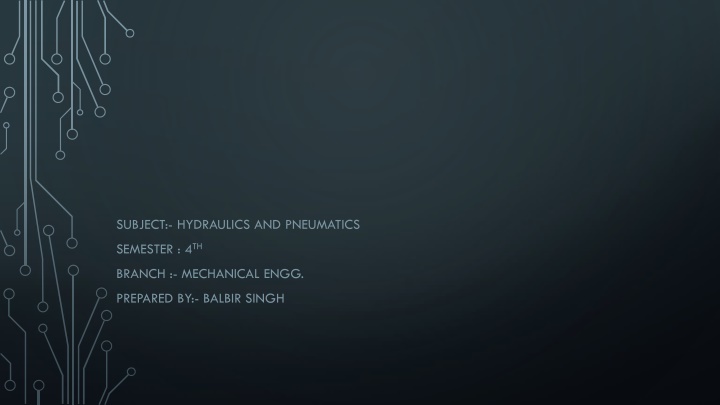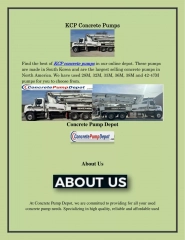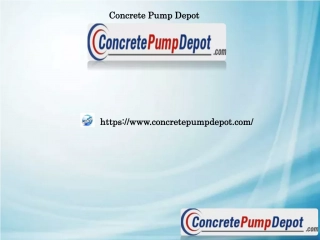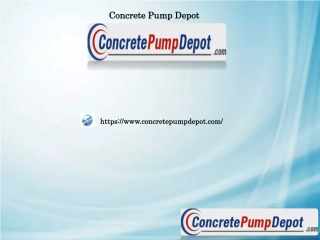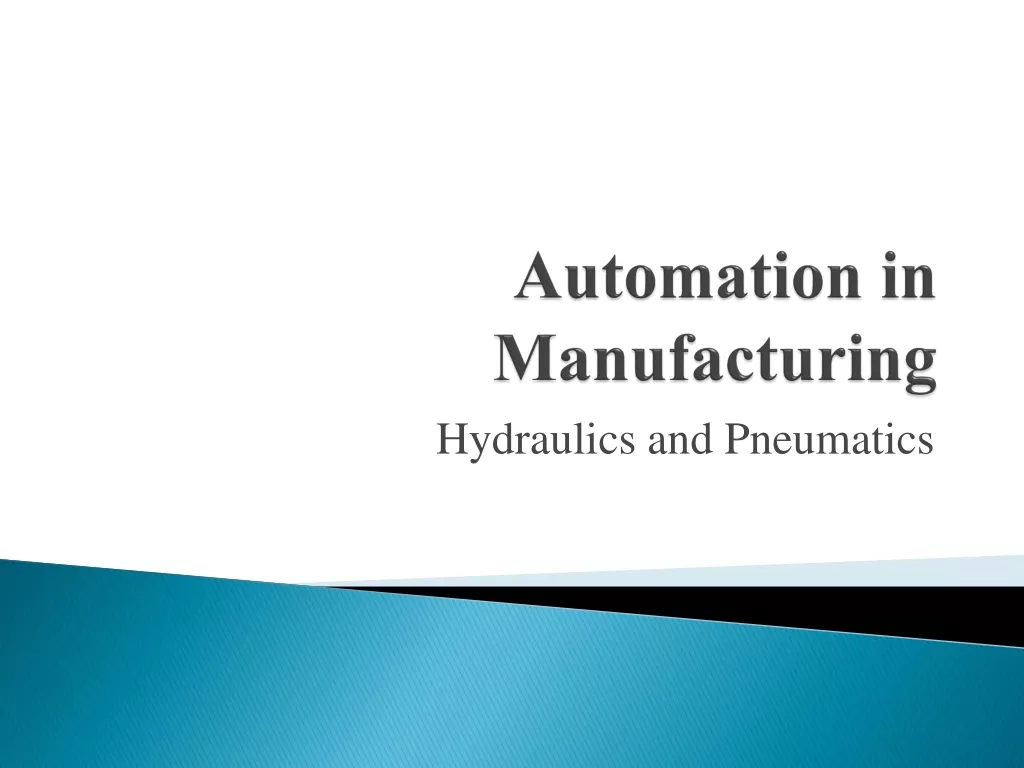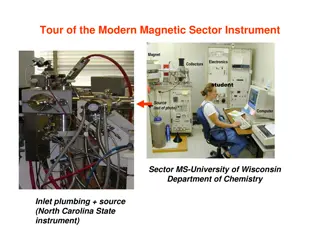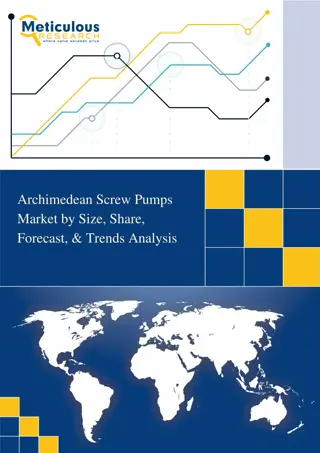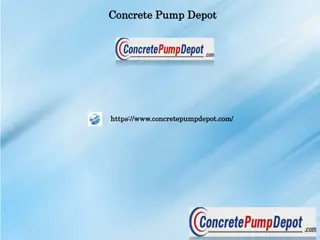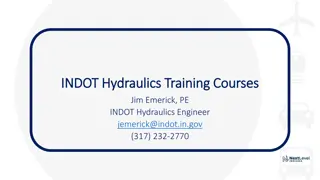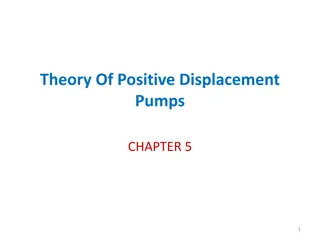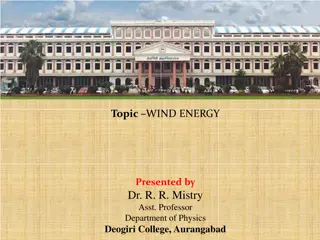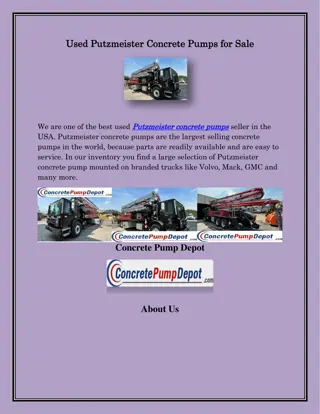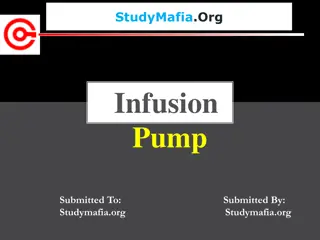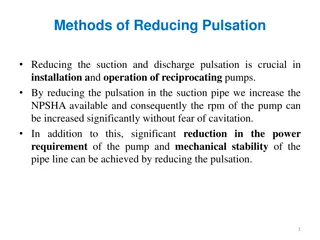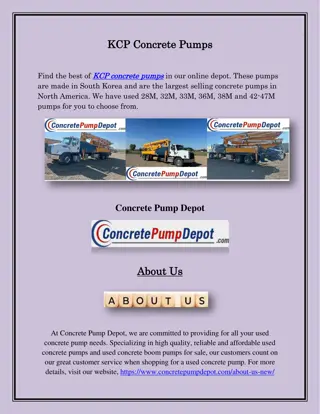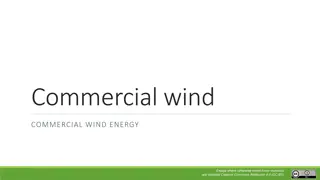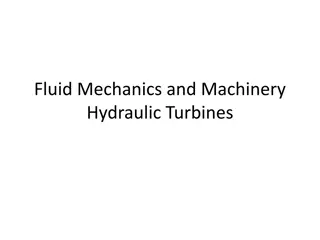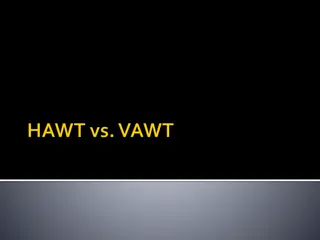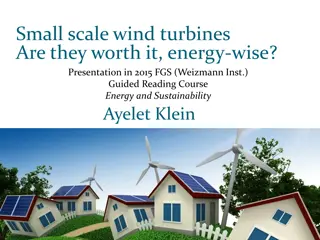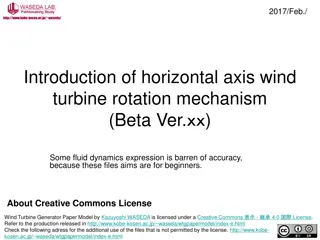Hydraulics and Pneumatics: Pumps and Turbines Overview
Learn about hydraulic pumps and turbines in this comprehensive guide covering reciprocating pumps, centrifugal pumps, and different types of rotary pumps. Explore essential terms like cavitation and priming, along with the working principles of hydraulic machines.
Download Presentation

Please find below an Image/Link to download the presentation.
The content on the website is provided AS IS for your information and personal use only. It may not be sold, licensed, or shared on other websites without obtaining consent from the author.If you encounter any issues during the download, it is possible that the publisher has removed the file from their server.
You are allowed to download the files provided on this website for personal or commercial use, subject to the condition that they are used lawfully. All files are the property of their respective owners.
The content on the website is provided AS IS for your information and personal use only. It may not be sold, licensed, or shared on other websites without obtaining consent from the author.
E N D
Presentation Transcript
SUBJECT:- HYDRAULICS AND PNEUMATICS SEMESTER : 4TH BRANCH :- MECHANICAL ENGG. PREPARED BY:- BALBIR SINGH
PUMPS AND WATER TURBINES Hydraulic Pump Rotary Pumps Reciprocating Pumps Centrifugal Pumps Water Turbines Pelton Wheel Turbine Francis Turbine Kaplan Turbine
HYDRAULIC PUMP AND TURBINE Pumps are the Hydraulic machines which convert mechanical energy into Hydraulic energy( Pressure Energy). Pumps are used to lift liquid to lift it from lower level to higher level. Examples of Pumps are Centrifugal, Reciprocating Pumps and Rotary Pumps etc. Whereas Hydraulic Turbines converts Hydraulic energy into Mechanical Energy. The mechanical energy is further converted to electrical energy. Hydraulic Turbine is the most important part of Hydro-electric power plant.
RECIPROCATING PUMP A Reciprocating Pump sucks and lifts the liquid by actually displacing it with the help of piston reciprocating in a cylinder. It is a positive displacement pump. Components 1. Cylinder 2. Piston 3. Suction & Delivery Valves 4. Suction and Delivery Pipes
CENTRIFUGAL PUMP It is that hydraulic machine which converts mechanical energy into pressure energy by means of centrifugal force acting on the liquid . Components 1. Impeller 2. Casing 3. Suction Pipe 4. Delivery pipe
IMPORTANT TERMS Cavitation:- It is the formation of vapour bubbles in a flowing liquid in the region where the pressure of liquid falls below its vaopur pressure and then sudden collapsing of these bubbles in high pressure region. Pitting:- The erosion of pump material on the inside surface due to repeated hammering action caused by collapsing vapour bubbles at high pressure region is called pitting. Priming:- In this operation the suction pipe, casing and a portion of delivery pipe of a centrifugal pump is filled with liquid from outside source for removing air .
COMPARISON OF RECIPROCATING AND CENTRIFUGAL PUMP CENTRIFUGAL PUMP Its operation is steady. Delivery is continuous and smooth. Used for large discharge and small heads. Operating speed is high Low maintenance cost Initial cost is less. More viscous fluids can be lifted RECIPROCATING PUMP Its operation is intermittent. Delivery is fluctuating and pulsating. Used for high head and low discharge Operating speed is low Maintenance cost is more High Initial cost Used for lifting less viscous fluids
TURBINE Hydraulic Turbines are the machines which use the energy of water and converts it (Hydraulic energy) into Mechanical Energy. The mechanical energy developed by a turbine is further converted to electrical energy by running an electric generator coupled directly to the shaft of Turbine. Hydraulic Turbine is the most important part of Hydro-electric power plant.
CLASSIFICATION OF HYDRAULIC TURBINES 1. (a) 2. (a) According to the type of energy at inlet Impulse Turbine (b) Reaction Turbine According to the direction of flow through runner Tangential Flow Turbine (b) Radial Flow Turbine (c) Axial Flow Turbine (d) Mixed Flow Turbine 3. According to Head at the inlet of turbine (a) High Head Turbine (b) Medium Head Turbine (c) Low Head Turbine 4. According to Specific speed of turbine (a) Low Specific speed turbine (b) Medium specific speed turbine (c) High Specific speed turbine
IMPULSE TURBINE VS REACTION TURBINE REACTION TURBINE IMPULSE TURBINE 1. 1. The energy available at the inlet of the turbine is Kinetic energy only The energy available at the inlet of turbine is kinetic as well as pressure energy. 2. 2. The pressure in the turbine from inlet to outlet is atmospheric pressure As the water flows from inlet to outlet pressure decreases and at outlet of turbine pressure is below atmospheric pressure. 3. 4. 3. These turbines works on high head (above 250 m) These turbines works on medium head (60 m to 250 m) and low head ( Below 60 m). The wheel does not run full so that the air has free access between the vanes. 4. 5. 6. 7. 8. The wheel always run full. 5. 6. 7. 8. Casing has no hydraulic function Casing has hydraulic function. Flow through the turbine is tangential. Flow of water is axial, radial or mixed . Draft tube is not required. Draft tube is required. Flow regulation is done by the needle valve fitted into the nozzle Guide vanes are required to control the supply of water to runner. 9. 9. Examples : Pelton Wheel Turbine, Gurard Turbine, Banki Turbine etc. Examples: Francis Turbine, Kaplan Turbine, Propeller Turbine etc.
SELECTION OF TURBINES The hydraulic turbine is always selected to match the specific conditions under which it had to operate and attain maximum possible efficiency. Following factors are considered while selecting a suitable turbine for a particular power plant. 1. Rotational Speed 2. Specific Turbine 3. Head Available 4. Runaway speed 5. Availability of water 6. Number of units 7. Cavitation 8. Part load efficiency 9. Maximum Efficiency 10. Overall cost of plant
PELTON WHEEL TURBINE Pelton wheel Turbine is an impulse turbine, tangential flow, high head and low specific speed turbine Designed by L.A. Pelton, an American engineer. Water from the reservoir flows through the penstock and at the Nozzle fitted at outlet of it coverts available head into Kinetic Energy. A high velocity jet of water through the nozzle is made to strike the series of Buckets ( Vanes) mounted over the periphery of the runner making the runner revolving freely and consequently the shaft rotate keyed to the runner. Generator is coupled with the shaft for generating electricity. Important Parts are as follows:- 1. Nozzle and Spear 2. Runner with Buckets 3. Casing 4. Brake Nozzle
OIL POWER HYDRAULIC AND PNEUMATIC SYSTEMS Hydraulics System: Definition, components, merits and demerits and applications Pneumatic System: Definition, components , merits and demerits and applications Comparison of Hydraulic and Pneumatic Systems. Hydraulic oil, Seals
OIL POWER HYDRAULICS & PNEUMATICS Oil Power hydraulics is that branch of fluid mechanics in hydraulic oil is used as working medium. Pneumatics is tht branch of engineering in which compressed air or any other is used as working medium inoperating machines and equipments.
MERITS & DEMERITS OF HYDRAULIC SYSTEM Merit 1. As oil has more resistance to shear than water, it can transmit more shearing force. 2. Oil absorbs vibrations and shock load, if any, in a machine. 3. Speed of moving parts of a machine can be controlled easily. 4. Oil powered machines are self lubricating. 5. Oil powered machines need less maintenance. 6. Transmission of motion by oil is not easy. Demeitr:- 1. Leakage of oil causes problems in maintenance work and makes the working arae dirty. 2. Chances of fire hazards are there. 3. At high temperature oil looses its viscosity and therefore needs to replaced under such conditions. 4. Oil powered machinery is costlier than water powered.
APPLICATION OF OIL POWER HYDRAULICS 1. Operation of shaping machine 2. In Press Hammering 3. Hydraulic Vice 4. Earth moving machines 5. In drilling operation during oil exploration.
MERITS AND DEMERITS OF PNEUMATIC SYSTEM Merits:- 1. 2. 3. 4. Air is freely available in nature without any cost. Wear and tear of the parts using air as the working medium is less resulting in lower maintenance. More effective gripping as compared to hydraulic system As chances of fire hazards are not there, making thses system suitable for use in coal mines and other fire prone areas of manufacturing. 1. 2. 3. Demerits:- Storage vessel is required to store the compressed air, hence additional equipment is required in thses system. Chances of leakage of air from pressure side to low pressure side. It is not economical to use pneumatic system for small scale production unit.
APPLICATIONS OF PNEUMATIC SYSTEM The following are the applications of pneumatic system:- 1. Pneumatic tools 2. Pneumatic drills and chucks 3. Operating air motor 4. Operating spray paint gun 5. Operating the blower. 6. Pneumatic brakes in locomotives.
BASIC COMPONENTS OF HYDRAULIC SYSTEM 1. Oil reservoir 2. Pump 3. Valves 4. Filters 5. Seals 6. Pipe 7. Actuators
HYDRAULIC OIL The major function of hydraulic oil is to provide energy transmission through the system. The most common oil used is petroleum based mineral oil. Besides transmitting energy, it performs various functions which are as follows:- 1. Lubrication 2. Cooling 3. Sealing 4. Removal of contamination
TYPES OF MINERALS 1. Mineral oils 2. Emulsions:- (i) Oil-in-Water Emusions (ii) Water-in-oil Emulsion 3. Vegetable Oils
PROPERTIES OF AN IDEAL HYDRAULIC OIL 1. Viscosity should be ideal 2. Lubricating properties should be good. 3. Should be chemically and environmentally stable. 4. Should be in incompressible 5. Should be fire resistant. 6. Low flammability. 7. Foam resitance. 8. Volatility should be low. 9. Heat Dissipation ability should be good. 10. Density should be low.
SEALS Seal is a material which is used in the hydraulic system to prevent leakage of oil. Use of seals increases efficiency. Prevent loss of power. Prevent failure of components such as valves etc
CLASSIFICATION OF SEALS 1. Positive and non-positive seals:- Positive seals do not permit any leakage of oil and non-positivve seals permit a small amount of leakage of oil to the extent of providing lubricating film on the rotating parts. 2. Static and Dynamic seals:- Static seals prevent leakage of oil through stationey surfaces. Dynamic seals prevent leakage of oil around rotating or moving parts.
TYPES OF OIL SEALS 1. Gaskets 2. O-rings 3. Packing 4. Wiperrings 5. Piston rings
COMMONLY USED SEAL MATERIAL 1. Leather 2. Metal 3. Asbestos 4. Rubber, Elastomers and Plastics
REQUIREMENT OF GOOD SEALING MATERIALS 1. Should resist wear and abrasion 2. Should recover from deformation quickly. 3. Should resist harmful effects such as deterioration, excessive swelling and shrinkage caused by acids 4. Should withstand system temperature and pressure without leakage.
COMMON FAULTS IN HYDRAULIC SYSTEM 1. Sharp noise in the system 2. High rate of seal failure. 3. Excessive leakage in the system 4. Excessive loss of system pressure 5. Sharp rise in oil temperature. 6. Reduced speed of machine tool elements. 7. Cavitaion of pump. 8. Poor oil life.
SIMPLE VISUAL CHECKS OF OIL 1. 2. 3. 4. 5. 6. 7. 8. 9. Visual Appearance Smelling Viscosity Tardiness Oxidation Acidity Foaming Water content Solid content
BASIC COMPONENTS OF PNEUMATIC SYSTEM 1. Air Copressor 2. Relief Valve 3. Air Filter 4. Air Pressure regulator 5. Lubricator 6. Direction control valve 7. Cylinder 8. Functional control
